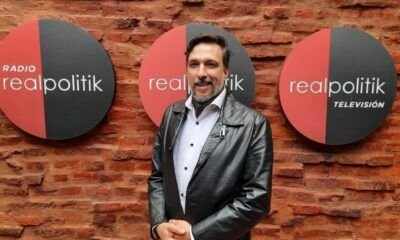INTERNACIONAL
Se estrena “Viva la Libertad”, una creación de Lalo Schifrin que resuena en la era Milei

Del “grito sagrado” en el Himno Nacional a la dictadura autodenominada Revolución Libertadora. De los libertarios anarquistas de principio del siglo XX a los anarcocapitalistas de La Libertad Avanza. Del “¡Libres o muertos, jamás esclavos!” de la guerrilla setentista al “¡Viva la libertad, carajo!” de Javier Milei. Hay una larga línea zigzagueante que recorre la historia argentina. La idea es la misma, una promesa: redención. Y sigue, no se detiene: por estos días, en el Palacio Libertad (ex CCK), un grupo nutrido de músicos de primer nivel ensaya una pieza que quiere marcar un hito. Se titula ¡Viva la libertad! Los compositores son Lalo Schifrin y Rod Schejtman.
Con la tutela oficial del secretario de Cultura Leonardo Cifelli, y el eslogan de “Música para quienes jamás se rinden”, la Orquesta Sinfónica Nacional (dirigida por Emmanuel Siffert) dará dos conciertos en el centro cultural del centro porteño este fin de semana: viernes y sábado a las 20. El programa incluye The Plot de Misión: Imposible, Dirty Harry Suite, Bullitt, Mannix, Cincinnati Kid y La Magia di Vivere —las primeras y muy famosas mundialmente obras de Schifrin, la última de Schejtman—, un intermedio con fragmentos de un documental sobre los compositores , y la esperada creación conjunta: Sinfonía ¡Viva la Libertad!.
Los tintes partidarios y oficialistas pueden resultar evidentes, pero los creadores se desligan de cualquier etiqueta. Evitan hablar de “sinfonías mileistas” para centrar su retórica —incluso al estilo Milei— en una refundación nacional, pero desde el arte y la cultura. “No es para algunos argentinos. La compusimos para todos los argentinos”, asegura Schifrin desde Los Ángeles. Y subraya el objetivo unificador: “Un mensaje de esperanza musical para el país que amamos”. “Escribimos esta sinfonía dedicada a todos los argentinos, sin distinción”, agrega Schejtman a días del estreno de una obra que busca ser inolvidable.

Fue el año pasado cuando Lalo Schifrin llamó a Rod Schejtman. Había escuchado con mucha atención las composiciones para el WorldVision Composers Contest de Viena, conocido como el “Mundial de la Música Clásica”. “Fue una conversación inolvidable, casi surrealista”, recuerda el compositor argentino de cuarenta años. No es para menos: Schifrin —cinco Grammys, cuatro Emmys, seis nominaciones al Oscar y uno honorario, y una estrella con su nombre en el Paseo de la Fama de Hollywood— no sólo le brindaba elogios, también una oferta. “Le propongo que seamos socios y compongamos una gran obra juntos dedicada a la Argentina”, fueron las palabras del otro lado de la línea.
En los 92 años de vida que ostenta Boris Claudio Schifrin se incluyen postales como estas: tocar el piano a los seis años, estudiar en el Nacional Buenos Aires, participar de la bohemia francesa del jazz durante los cincuenta, ser el director musical de Dizzy Gillespie en los sesenta, componer bandas sonoras de películas como Harry el sucio, La leyenda del indomable y El viaje de los malditos, y ser mundialmente conocido —toda estrella tiene su hit— por componer la popular melodía de Misión Imposible. Una deuda pendiente: la música clásica. “Venga a Los Ángeles”, fue el pedido.

Desconcertado, le pidió una idea, una melodía, algo. Schifrin le tarareó ocho segundos de algo que venía zumbándole desde hacía tiempo. “Cuartas superpuestas”, añadió. “Desde el instante en que transcribí esa melodía en mi piano, supe que había nacido para ser interpretada por una gran sección de violines. Pensé entonces: si esta obra ha de rendir homenaje a la Argentina, debe ser grandiosa e imponente. Merece ser escrita para una orquesta sinfónica completa. Tomé esos ocho segundos iniciales, los desarrollé aplicando técnicas del repertorio clásico, y escribí un fragmento sinfónico de tres minutos, concebido para cien músicos”, cuenta Schejtman.
Rod Schejtman aterrizó en Los Ángeles con la partitura en el bolso. El estudio de Schifrin no escamoteaba rincones para ostentar sus reconocimientos. Pusieron play. El veterano compositor le pidió a su asistente que llame a su esposa para escucharla nuevamente con ella. “A partir de ese momento comenzamos a trabajar codo a codo. Pero componer junto al Maestro Schifrin fue mucho más que un proceso creativo: significó adentrarme en su mundo personal, compartir sus recuerdos, su visión artística, y recorrer su trayectoria a través de anécdotas y experiencias”, cuenta.

“Veíamos juntos fragmentos de sus películas, y él me confiaba los secretos de la técnica musical que había utilizado para cada escena. También fue profundamente revelador descubrir la cantidad de afinidades musicales que compartíamos, a pesar de la diferencia de medio siglo entre nosotros. Schifrin profesa una profunda admiración por Stravinsky y Olivier Messiaen —quien, por cierto, fue su maestro directo—, y comparte mi devoción por los grandes románticos como Chopin y Rachmaninoff, sin dejar de lado, por supuesto, su inquebrantable pasión por el jazz», agrega.

Cuando Infobae Cultura le pide una opinión sobre el presidente Javier Milei y la inevitable conexión entre el título de la pieza y la proclama arquetípica del actual gobierno, Schifrin esquiva el asunto. “La obra no necesita explicación. Es arte. Lo importante es que la escuchen y sientan lo que transmite nuestra música. Es una obra musical. Es mucho más que un título. Es la fusión de dos compositores argentinos, volcando su alma en notas para su país. Nuestro propósito fue componer una obra que lleve un mensaje de esperanza a toda la Argentina. Ojalá hayamos logrado expresar el coraje y la resiliencia del pueblo argentino: su capacidad de atravesar tiempos difíciles con alegría y optimismo”.
Su compañero creativo opta por una posición similar al escuchar el nombre del actual mandatario. “La libertad, como concepto, va mucho más allá de cualquier coyuntura política: es una fuerza que inspira, que moviliza el alma, y que tiene un eco muy profundo en el arte”, dice Schejtman, para luego agregar que “quienes nos dedicamos a la creación artística —más allá de estilos, lenguajes o fronteras— aspiramos a nutrir el espíritu humano, volcando lo más auténtico de nuestro ser en cada obra. Y no hay gesto más significativo que crear desde el amor por la tierra que nos vio nacer”.

Desde su casa en Los Ángeles, y por medio de Schejtman, Lalo Schifrin responde a las preguntas de Infobae Cultura. Cuenta que al saber que su colega y compatriota quería hacer la obra con él se “emocionó profundamente”. “Ese fue el punto de partida. Me emocioné. Y cuando yo me emociono, surgen mis ideas. El hecho de poder componer una obra dedicada a la Argentina junto al Maestro Schejtman me dio un gran entusiasmo y me hizo sentir nuevamente la necesidad de escribir. Y ese entusiasmo nació gracias a él. Él fue la razón por la que pudimos terminar esta sinfonía en tan solo seis meses”.
“El estreno de esta sinfonía representa lo más importante en este momento de mi vida. Estoy seguro de que la Orquesta Sinfónica Nacional hará una interpretación increíble. Tengo muchos recuerdos hermosos de esta orquesta, que también fue muy importante para mi padre, Luis Schifrin“, y luego confiesa ”una profunda nostalgia por la Argentina», y que “la música es mi forma de volver”. La obra, dice, “no es para algunos”: “La compusimos para todos los argentinos. Un homenaje a nuestro país y a nuestro espíritu de resiliencia. Un mensaje de esperanza musical para el país que amamos”.

Schejtman comparte la idea: “Desde hace siglos, los compositores buscamos inspirar. La música siempre refleja su tiempo: lo bueno y lo doloroso, la luz y la sombra”. Ambos comparten “no solo la pasión por nuestro arte, sino también un profundo amor por nuestro país”. Por tal motivo “escribimos esta sinfonía dedicada a todos los argentinos, sin distinción. Una creación que nace del amor por nuestra tierra y del deseo sincero de rendir homenaje a nuestra gente. Y, por encima de todo, buscamos dejar un legado de : que la música nos recuerde siempre que lo mejor siempre está por venir”.
[Fotos: Adrián Escandar]
INTERNACIONAL
GOP gubernatorial candidate in key state touts record in race against Ramaswamy: ‘Results, not just rhetoric’

WASHINGTON, DC – Ohio Republican Attorney General Dave Yost, who is running for governor against tech entrepreneur Vivek Ramaswamy in the primary, spoke to Fox News Digital about his campaign and what he sees as the key difference between the two campaigns.
«We do agree on an awful lot of things,» Yost, who was in Washington to celebrate with the national champion Ohio State Buckeyes college football team at the White House, told Fox News Digital about the gubernatorial race.
«The difference is that I’m running on a record of results, not just rhetoric.»
Part of that record, Yost explained, is his time as the state auditor in Ohio, where he helped uncover $260 million of efficiency savings.
SCOOP: RAMASWAMY SCORES ENDORSEMENT FROM A POWERFUL HOUSE MEMBER IN OHIO GOVERNOR RUN
Vivek Ramaswamy (Right) and Dave Yost (Left) are running for governor as Republicans in Ohio. (Getty Images)
«I was DOGE before DOGE was cool,» Yost said, adding later that «virtually nobody» he talks to in Ohio is opposed to the fraud and waste spending that is taking place with DOGE amid vocal Democratic pushback.
Yost also touted his record on crime and public corruption as the state’s attorney general since 2019 and suggested his experience differentiates him from Ramaswamy.
«We’ve been fighting for the Constitution, for the rights of Ohioans, fighting public corruption,» Yost said. «More than 170 people have gone to jail because of my work and the work of my team. So, we’ve been in the trenches. We don’t need on-the-job training, and I think that that record of results is going to make a difference for Ohioans.»
OHIO COLLEGE ‘ILLEGALLY FORCING STUDENTS’ TO SHARE BATHROOMS WITH OPPOSITE SEX: WATCHDOG
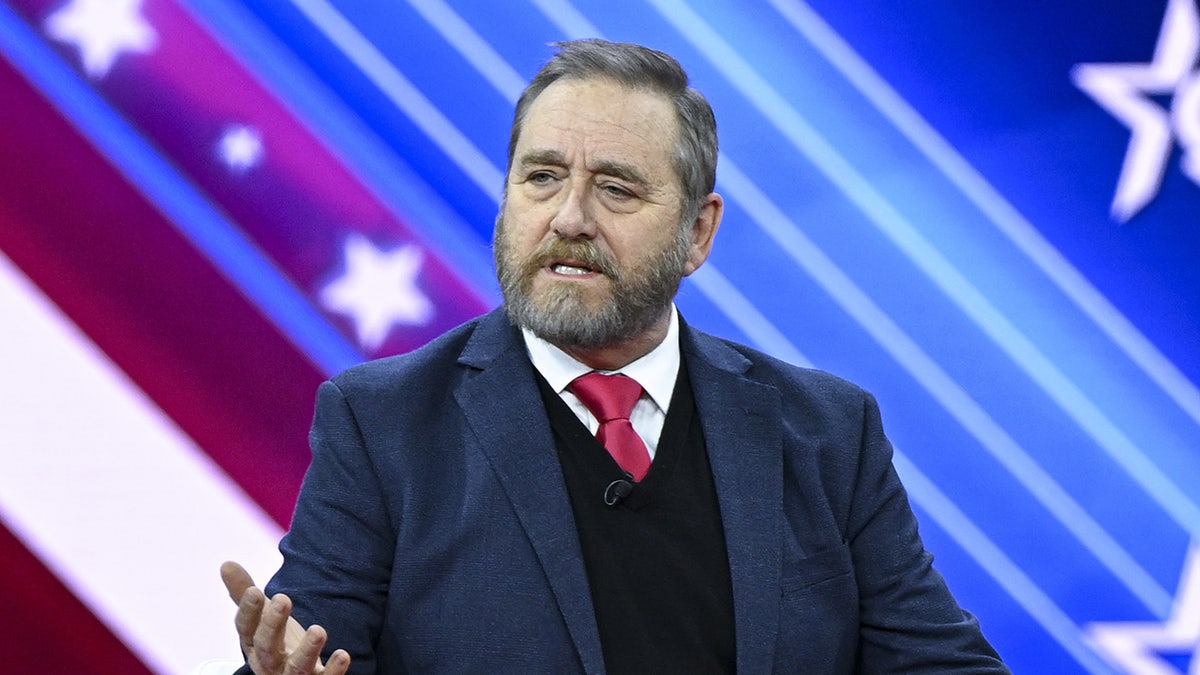
Ohio Attorney General Dave Yost speaks at the Conservative Political Action Coalition annual meeting (Celal Gunes/Anadolu Agency via Getty Images)
Recent polling shows that Ramaswamy, who has been endorsed by President Trump, Elon Musk, Rep. Jim Jordan and others, holds a commanding lead in the race, but Yost remains optimistic.
«Obviously, there’s a long way to go, but I love Ohio,» Yost said. «I’ve been getting back out and talking with folks. The reception has been amazing. People are eager for a new America First kind of leadership in Ohio. And I am really excited about where we’re heading.»
One specific issue that Yost believes he has been clearer on where he stands is the death penalty.
«I don’t know where my opponent is on that,» Yost said. «He hasn’t spoken about it. I imagine that that’s why we have campaigns, and we’ll find out. But look, I support the death penalty.»
Yost explained that «safeguards» must be used, and he emphasized that there are «no do-overs» but said that «we need» the death penalty.
«What do you do with a guy who’s serving life without parole and then he kills a prison guard or a cook inside?» Yost said. «A family loses a loved one because of this murder. Was that a freebie? What, are we gonna give them another life sentence? So, at least in that circumstance, we need to have the death penalty, and then we’re just arguing about when we use it.»
«But the death penalty is not working in Ohio right now. We haven’t abolished it. We still have the promise of it out there as the ultimate justice. We haven’t executed anyone since 2018. The average time that somebody on death row has been waiting for their date with justice is 22 years. That’s not due process, it’s overdue process, and we need to either man up and say, okay, we’re not gonna do this anymore, or we need to go about following the law and bringing the 116 people on death row to their date with justice.»
A person close to the Ramaswamy campaign told Fox News Digital that the team is «looking forward to helping Dave Yost be successful in his next venture, whatever he chooses to do.»
Another local issue in Ohio that Yost told Fox News Digital he is concerned about is the recent push by professional sports teams to secure taxpayer funds for stadiums.
Yost expressed concerns about taxpayers being on the hook for sums of several hundred million dollars.
«I’m not so sure that the taxpayers ought to be throwing tax money at these big public stadium projects,» Yost said. «I mean, those bonds, those taxes are going to be paid for by people that in a lot of ways can’t afford to go to a pro game. That strikes me as unfair. But beyond that, we have no limiting principle here.»
CLICK HERE TO GET THE FOX NEWS APP
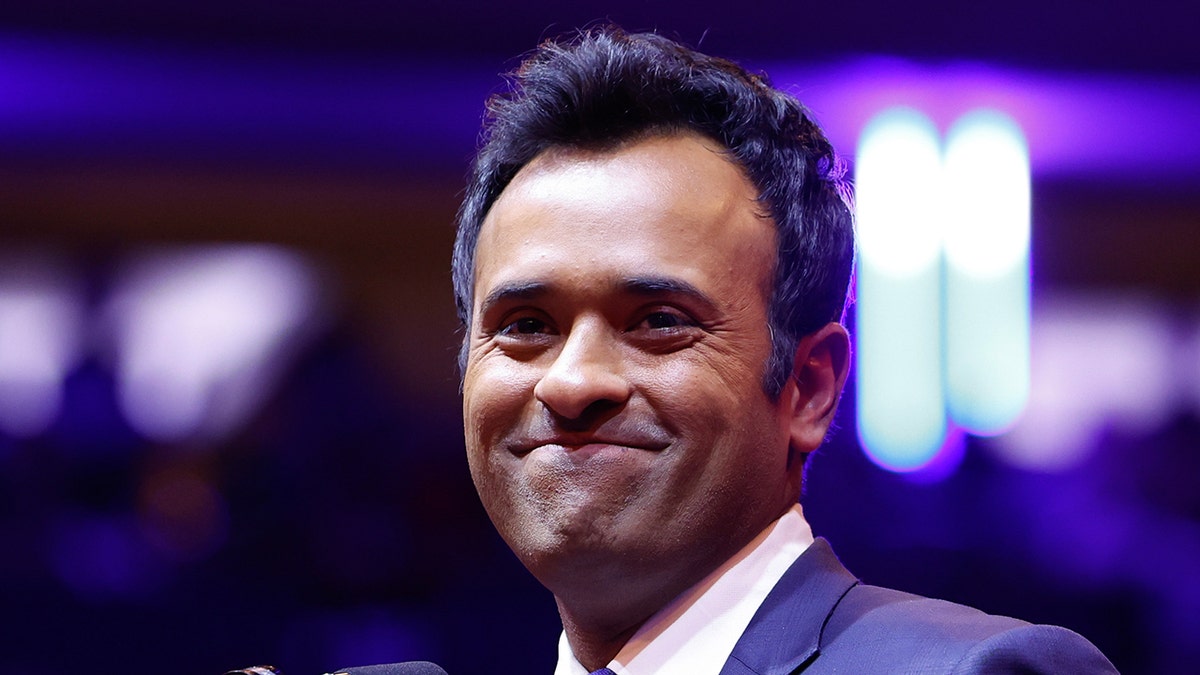
Vivek Ramaswamy speaks before Republican presidential nominee former U.S. President Donald Trump takes the stage at the campaign rally at Madison Square Garden on October 27, 2024, in New York City. (Anna Moneymaker/Getty Images)
«We’ve got all these different sports teams. We already have three of them now, since the Browns said we want $600 million. The Bengals come forward, and they want $350 million, and FC Cincinnati is saying, ‘Well, what about us?’ And pretty soon, we’re spending billions of dollars on sports stadiums that are used in one town a few days a year, when we could be spending that money on any number of other things, whether we’re talking about roads, bridges, economic development, whether we’re talking schools, or we’re talking about tax cuts. None of this makes sense to me. We at least need a plan and a limit. Right now, it looks like the candy store is just open.»
Fox News Digital asked Yost what he hears most often when he travels the state talking to voters, and he said that the economy and «kitchen table» issues are most prevalent, but pointed out that Trump’s tariff policies, which have been much maligned by the Democrats, are more popular than the media lets on.
«Right now, everybody’s watching as the world economy is being reordered, and unlike what I’m hearing from the disaster predicted by the elite press on the coasts, it’s a much different situation on the ground in Ohio,» Yost said. «I talk to a lot of businesses that think that this is going to be good for them, that the fair and reciprocal kinds of trade are going to bring a new resurgence to Ohio and to their industries, even though they see some pain and that’s what everybody’s talking about right now.»
Ultimately, Yost told Fox News Digital that he believes that his «record of results» shows that he is the candidate with the «experience and the vision and the know-how» to «bring Ohio to the bright future that’s out there for us.»
Ohio,Politics,Vivek Ramaswamy
INTERNACIONAL
Estados Unidos e Irán abrieron otra ronda de negociaciones por el programa nuclear de Teherán

Seguridad nuclear,Estados Unidos,Irán,Roma,Italia,Armas Nucleares,Últimas Noticias
INTERNACIONAL
Here’s what happened during Trump’s 13th week in office

President Donald Trump met with foreign leaders from El Salvador and Italy this week, advancing negotiations on both trade and immigration issues at the White House.
Italian Prime Minister Giorgia Meloni visited Washington during a pause in steep tariffs against the European Union and other countries that could go into effect in June. But both Trump and Meloni voiced optimism that the two countries would secure a deal before then.
«There will be a trade deal, 100%,» Trump told reporters at the White House Thursday. «Of course there will be a trade deal, they want to make one very much, and we’re going to make a trade deal. I fully expect it, but it’ll be a fair deal.»
ITALY’S MELONI GOES TO WASHINGTON FOR TARIFF HUDDLE WITH TRUMP
When asked whether she still considered the U.S. a reliable trading partner due to changes related to tariff policy, Meloni said that she wouldn’t have made the trek to the White House unless it were so. Meloni said her objective for the trip was to invite Trump to meetings on behalf of Italy and Europe to foster a trade negotiation between the two states.
«I think the best way is that we simply speak frankly about the needs that every one of us has and find ourselves in the middle for that’s useful for all,» Meloni told reporters Thursday.
Meanwhile, Vice President JD Vance met with Meloni Friday in Rome to continue discussing economic policies between the two countries.
Here’s what also happened this week:
Visit with Bukele
Trump kicked off the week meeting with El Salvador President Nayib Bukele Monday, launching a debate about whether El Salvador should return Maryland resident Kilmar Abrego-Garcia after he was deported there.
On Monday, Trump administration officials and Bukele agreed that they didn’t have the authority to return Abrego-Garcia to the U.S., even though the Trump administration admitted in court filings that he was deported in an «administrative error.» Even so, the Trump administration has accused Abrego-Garcia of being a member of the MS-13 gang, a designated terrorist group.
Meanwhile, the Supreme Court upheld in April a lower court’s order that «requires the government to ‘facilitate’ Abrego Garcia’s release from custody in El Salvador and to ensure that his case is handled as it would have been had he not been improperly sent to El Salvador.»
President Donald Trump shakes hands with Nayib Bukele, El Salvador’s president, during a meeting in the Oval Office of the White House in Washington, April 14, 2025 (Al Drago for The Washington Post via Getty Images)
While Attorney General Pam Bondi told reporters Monday that El Salvador would call the final shots on whether it would return Abrego-Garcia, Bukele said it was «preposterous» for El Salvador to do so.
«How can I smuggle a terrorist into the U.S.? I don’t have the power to return him to the United States,» Bukele said.
Additionally, the Justice Department unveiled documents Wednesday detailing domestic violence allegations that Abrego-Garcia’s wife, Jennifer Vasquez, included in a court filing in 2021. Vasquez alleged in the filing that Garcia beat her and that she had documentation of the bruises he left on her.
Feud with Harvard
The Trump administration also continued to go after federal funding at higher education institutions.
After Harvard refused to comply with a series of requests from the Trump administration to reform various practices on campus, the administration revealed Monday that it would freeze more than $2 billion in federal funding for the institution.
Harvard University President Alan M. Garber said in a Monday statement that the Trump administration included additional requests unrelated to tackling antisemitism on campus. As a result, Garber said the institution would not bend to those requests, claiming they were unconstitutional.
WHITE HOUSE SLAMS IVY LEAGUE INSTITUTIONS FOR ‘EGREGIOUS ILLEGAL BEHAVIOR’ AMID TRUMP FEUD WITH HARVARD
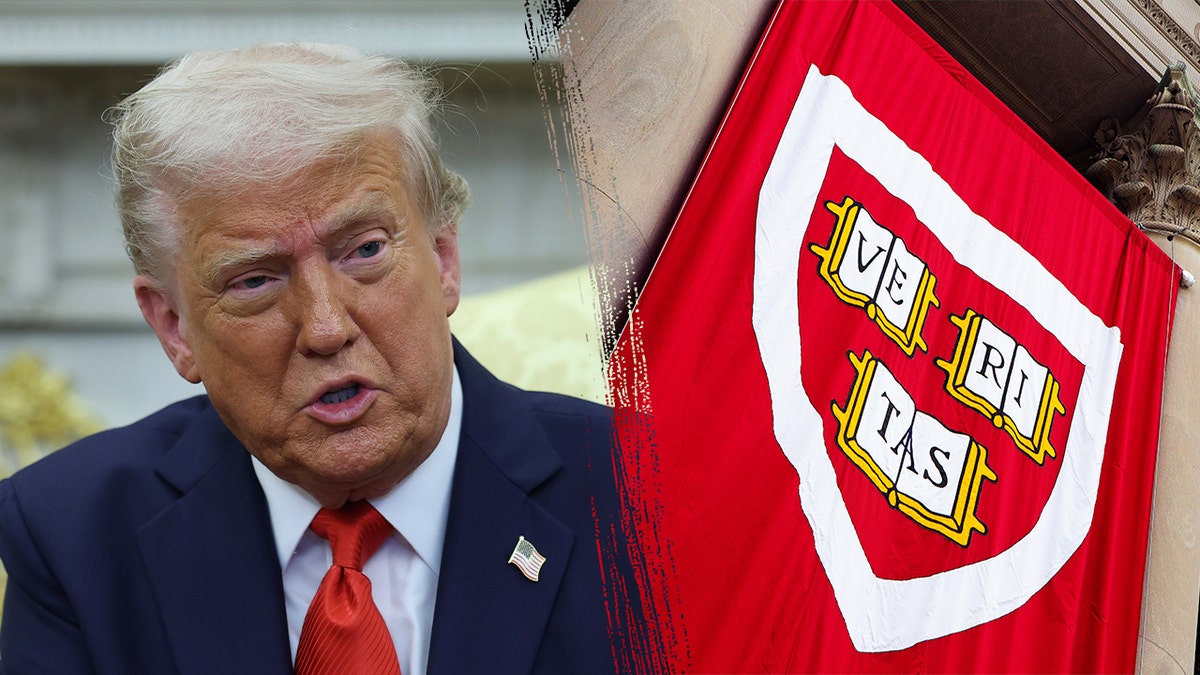
Trump has publicly criticized Harvard University multiple times in recent weeks. (Getty Images | iStock)
Garber said the new requests «direct governmental regulation of the ‘intellectual conditions’ at Harvard,» including auditing viewpoints of student, faculty and staff members on campus, and eliminating all diversity, equity and inclusion (DEI) programs, offices and initiatives at Harvard.
«It makes clear that the intention is not to work with us to address antisemitism in a cooperative and constructive manner,» Garber said. «We have informed the administration through our legal counsel that we will not accept their proposed agreement.»
Prescription drug prices
Trump also signed an executive order Tuesday seeking to combat soaring prescription drug prices.
The directive instructs Robert F. Kennedy Jr.’s Department of Health and Human Services (HHS) to standardize Medicare payments for prescription drugs, including those used for cancer patients, no matter where a patient receives treatment. This could lower prices for patients by as much as 60%, according to a White House fact sheet.
CLICK HERE TO GET THE FOX NEWS APP
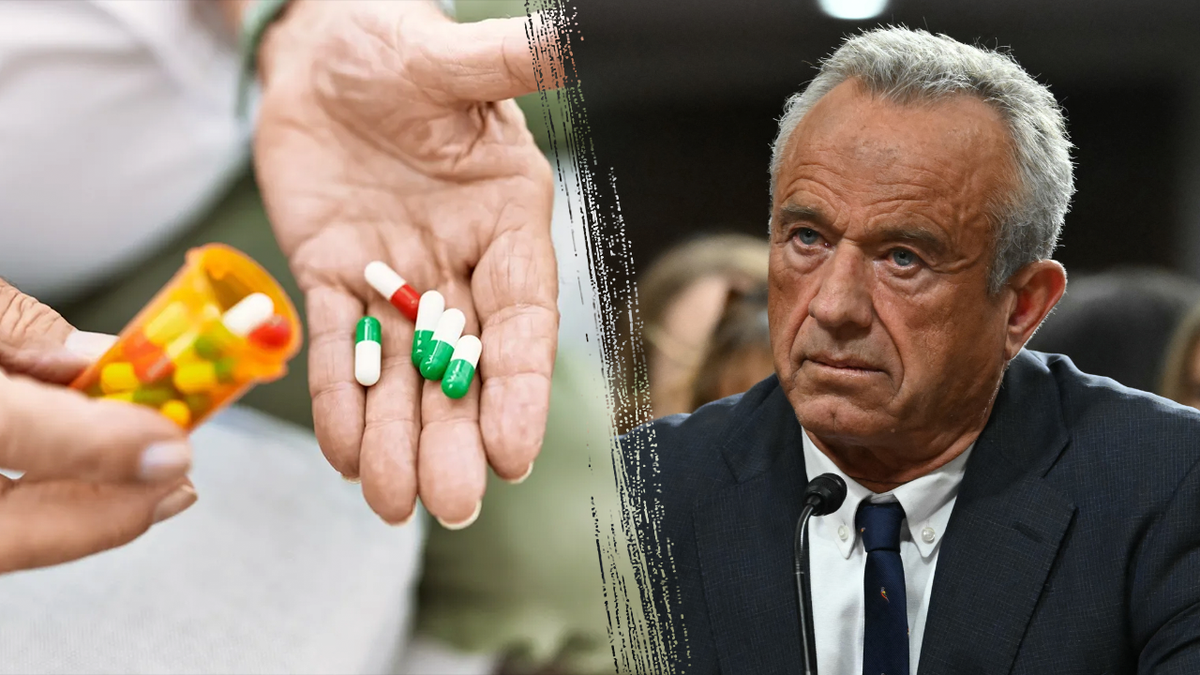
A new White House directive instructs Robert F. Kennedy Jr.’s Department of Health and Human Services to standardize Medicare payments for prescription drugs. (iStock/Getty )
The order also includes a provision to match the Medicare payment for certain prescription drugs to the price that hospitals pay for those drugs. That amounts to up to 35% lower than what the government pays to acquire those medications, the White House said.
Drug prices have significantly risen in recent years. Between January 2022 and January 2023, prescription drug prices rose more than 15% and reached an average of $590 per drug product, according to the Department of Health and Human Services. Of the 4,200 prescription drugs included on that list, 46% of the price increases exceeded the rate of inflation.
White House,Italy,The European Union,Immigration,Healthcare














